A safety helmet also known as a hard hat is one of the most essential Personal Protective Equipment (PPE) designed to safeguard workers from hazards that can cause injury or illness in high-risk environments. Among the most critical PPE items is the safety helmet, a protective gear designed to prevent head injuries on construction sites, industrial facilities, and other hazardous workplaces. It is not only designed to shield against impacts but also to serve as a quick identifier of the roles and responsibilities of workers on-site.
This guide explores the importance of safety helmets, the standard colour codes used to represent different roles, and how these codes contribute to an organized, secure work environment.
Importance of Safety Helmet
Safety helmets are a primary line of defence against head injuries, which can occur from unexpected risks on job sites. Whether it’s an object falling from a height or accidental contact with equipment, a well-designed helmet can prevent or reduce the severity of injuries, sometimes saving lives. Beyond protection, safety helmets can provide role identification, help enforce safety protocols, and encourage an overall culture of safety
How Safety Helmet Colors Improve Workplace Safety
- Easily Recognize Roles: Wearing a colour-coded helmet can help in identifying the job responsibilities of different levels of workers in the industries.
- Improve Emergency Respond: It is easier to spot emergency personnel by their helmet colour during emergencies.
- Enforce Safety Zone: Personnel wearing helmets are only allowed at the work site restricting other people from entering and minimizing the risk associated.
Also, read: Importance Of Personal Protective Equipment (PPE) In Construction Zones
Colour Code for Safety Helmet
The colour code of the safety helmet greatly depends upon the regional policy and safety regulations of the country.
White Helmet
White helmets are for higher-ranking personnel, including engineers, site supervisors, and managers. These individuals oversee project operations, safety, and compliance with standards. Their white helmets indicate leadership and responsibility.
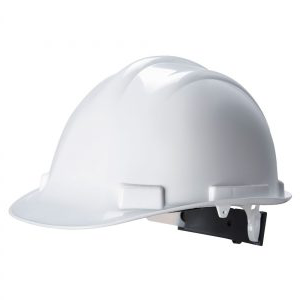
Yellow Helmet
Yellow safety helmets are worn by general categories of labourers and those involved in heavy-duty tasks. The general category of labour may include helper and mason. It’s the most common colour code on construction sites as labourers and operators are generally the largest group on-site. The bright colour yellow is easily visible to the supervisor and manager in a hazardous workplace.
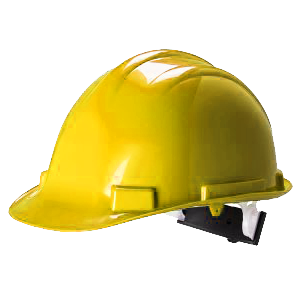
Blue Helmet
Blue helmets are intended for skilled workers such as electricians, carpenters, and other technical operators. It helps distinguish skilled labour from general labourers, indicating specialized tasks and potentially hazardous duties.
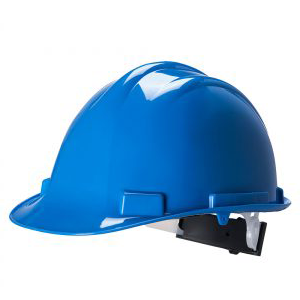
Green Helmet
Green safety helmets are typically assigned to safety officers or personnel responsible for maintaining and enforcing the safety of the work environment. They conduct site safety checks, ensure adherence to protocols, and provide first-aid in emergencies.

Brown Helmet
Brown helmets are typically worn by welders and skilled workers who are trained to work in a high-temperature environment. The colour indicates that these workers need specific protection from sparks, heat, or fire hazards.
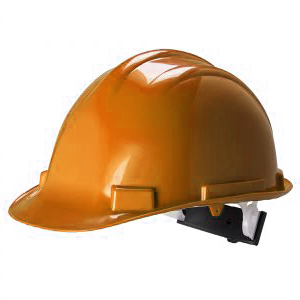
Red Helmet
Red helmets are reserved for emergency or firefighting personnel in the construction sites. The personnel wearing red helmets are extensively trained to handle the emergency or when fire hazards break out. In the case of an emergency, the red helmet is easily visible and the personnel can navigate rapidly to protect lives and properties at the site. Therefore, it should never be worn by any other personnel for any other reason.
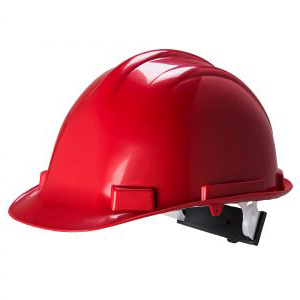
Orange Helmet
This colour code of helmet is worn by roadside workers or slinger/signallers and heavy machinery operators along the highway. The bright orange colour enhances visibility, making it easier to identify workers in busy, high-traffic areas or low-visibility conditions.

Pink Helmet
The pink helmet is not as common as other colour codes for the helmet. They are often used for spare helmets or sometimes as a disciplinary measure to promote adherence to safety protocols. In some workplaces, they are also assigned to visitors or personnel without specific roles. However, it
Assigning a pink safety helmet specifically to women will create a visible distinction of gender on the job site which would help in assessing and managing her works. It would also easily identify the women working on the site and identify gender equality at the construction site. Thus, the colour coding for helmets is not based on gender rather it is based on the individuals’ roles and responsibilities.
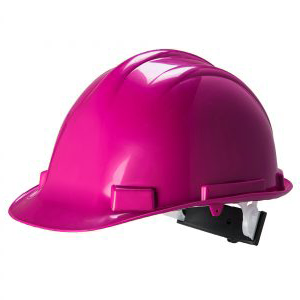
FAQs:
Q: Why do safety helmets come in different colours?
Ans: Safety helmets come in different colours to create a clear, standardized system that allows quick identification of roles and responsibilities on a job site. Each colour represents a different position, such as supervisors, labourers, safety officers, and visitors. Also, this colour-coding improves workplace safety and in the event of emergencies, the colour codes allow personnel to quickly locate emergency responders, safety officers, or site managers, enhancing response times. Additionally, they help restrict access to certain areas, as specific colours may indicate authorization to be in high-risk zones.
Q: Are safety helmets assigned based on gender on the work site?
Ans: Safety helmets are not provided for gender distinction but rather according to the rank and responsibility of personnel at the work site. Thus, the pink helmets intended for women are minimal to be seen at construction sites.
Q: Can workers wear different colours of safety helmets interchangeably?
Ans: No, workers should not wear different colours of safety helmets interchangeably. Each helmet colour is assigned to represent a specific role or responsibility on the work site, and changing or mixing helmet colours can lead to confusion and may compromise safety and organization on the site.
References:
- Safety helmet colours. (n.d.). Designing Buildings. https://www.designingbuildings.co.uk/wiki/Safety_helmet_colours
- Mishra, S., Khoteja, R., & Mahat, C. (2021). Design and analysis of industrial safety helmet. Kathmandu University Journal of Science Engineering and Technology, 15(2). https://doi.org/10.3126/kuset.v15i2.63368
Disclaimer of the Article:
The colour code presented in the article is based on general assumptions and does not comply with any regional guidelines or policies. It also does not claim the right to enforce any specific safety standards or official standards for helmet colour usage.
![]()







